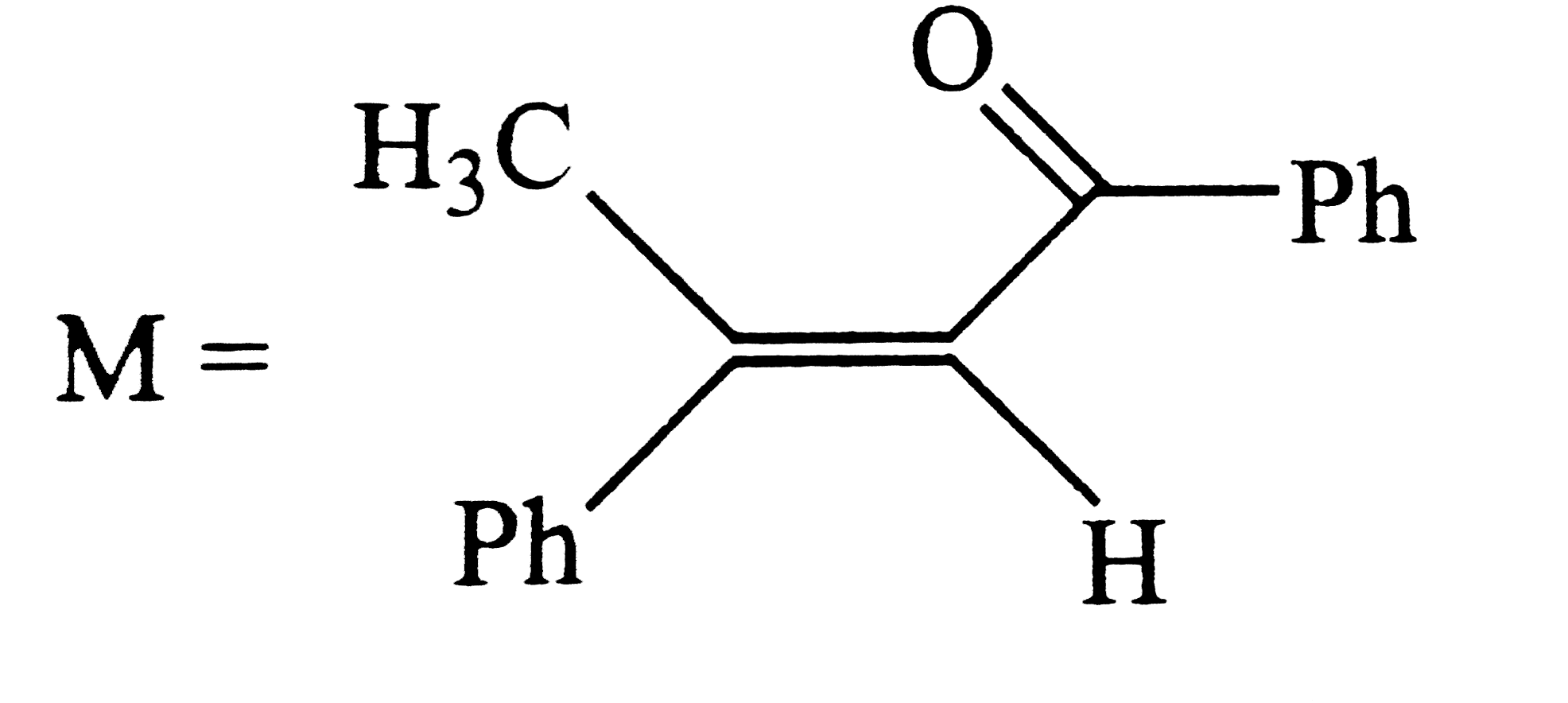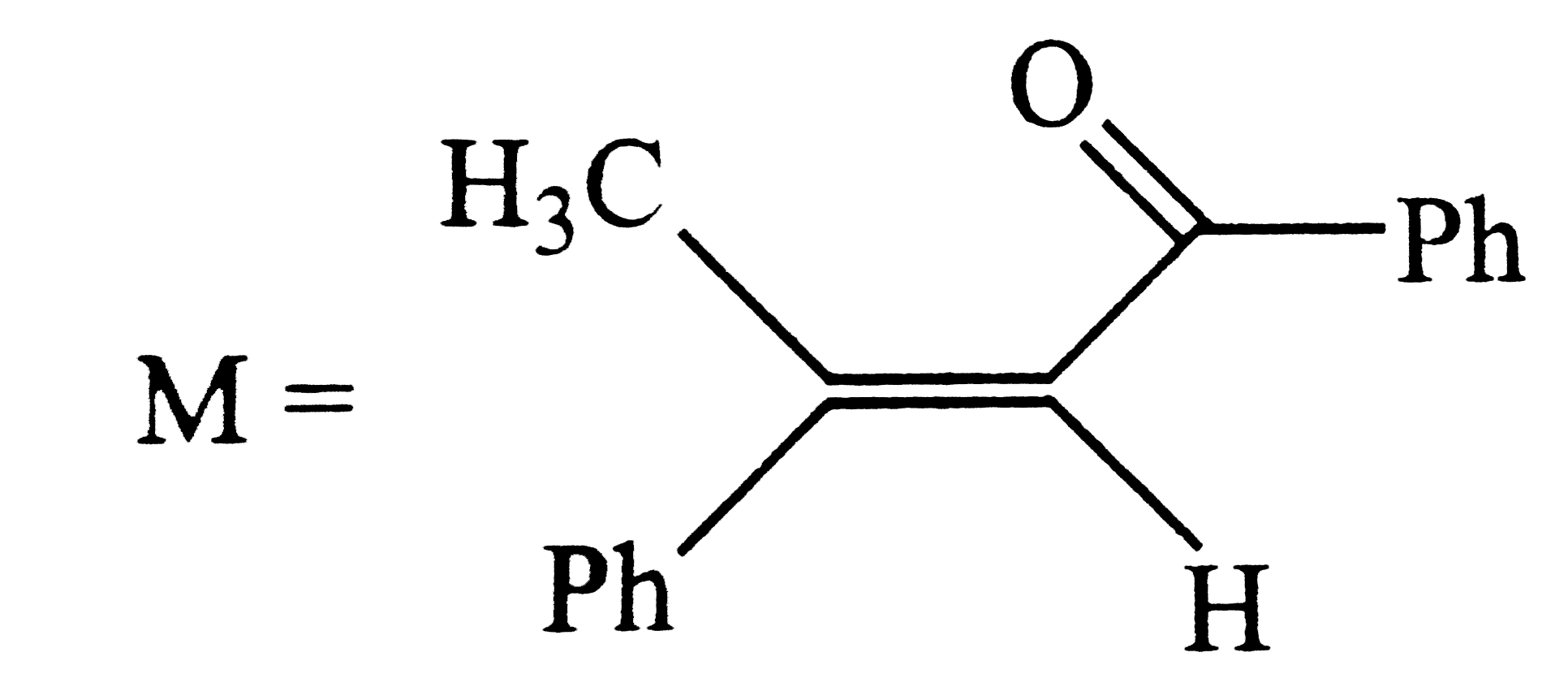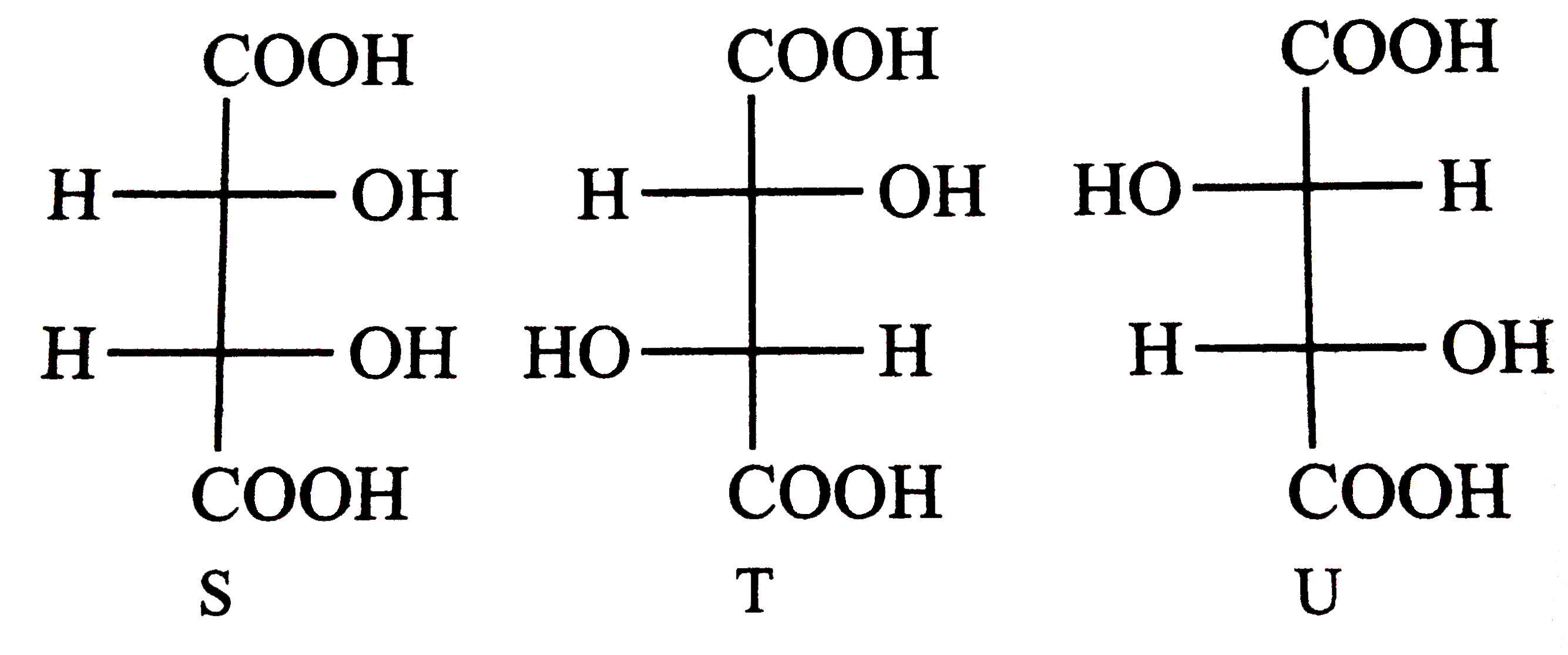Complete Solutions to COMPETITION FOCUS JEE (MAIN AND ADVANCED)/MEDICAL ENTRANCE SPECIEAL (MULTIPLE CHOICE QUESTIONS COMPREHENSION TYPE) of chapter ALDEHYDES, KETONES AND CARBOXYLIC ACIDS of Class 12 book with complete answers and questions
| Class 12 | CHEMISTRY |
| Chapter | ALDEHYDES, KETONES AND CARBOXYLIC ACIDS |
| PRADEEP | COMPETITION FOCUS JEE (MAIN AND ADVANCED)/MEDICAL ENTRANCE SPECIEAL (MULTIPLE CHOICE QUESTIONS COMPREHENSION TYPE) |
| Number Of Questions | 11 |
| Academic Year | 2023-24 |
In chemical analysis, the presence of a methyl ketonic group is tested with `I_(2)` in presence of an alkali like NaOH or KOH. In another chemical analysis, aldehyde group is tested either by Tollens' reagent `(AgNO_(3)NH_(3)OH)` which gives silver mirror or by Fehling's solution `(CuSO_(4)+NaOH+` Roschelle salt) which gives red ppt. of copper (I) oxide.
Q. Consider the following compounds:
I. `CH_(3)-overset(O)overset(||)(C)-CH_(2)-overset(O)overset(||)(C)-CH_(3)`
II. `CH_(3)-overset(O)overset(||)(C)-overset(O)overset(||)(C)-CH_(3)`
III. `CH_(3)-overset(O)overset(||)(C)-OH`
IV. `CH_(3)-overset(O)overset(||)(C)-Cl`
Which will give iodoform test?01:36View SolutionIn chemical analysis, the presence of a methyl ketonic group is tested with `I_(2)` in presence of an alkali like NaOH or KOH. In another chemical analysis, aldehyde group is tested either by Tollens' reagent `(AgNO_(3)NH_(3)OH)` which gives silver mirror or by Fehling's solution `(CuSO_(4)+NaOH+` Roschelle salt) which gives red ppt. of copper (I) oxide.
Q. Fehling solution will oxidise
 View Solution
View SolutionThe acidic strength of saturated aliphatic carboxylic acids depends mainly upon the inductive effect of the substituent and its position w.r.t., the -COOH group. Whereas electron donating substituents tend to decrease, electron withdrawing substituents tend to increase the acid sttrength. the acidic strength of aromatic carboxylic acids, on the other hand, depends upon both the inductive and the resonance effect of the substituents
Q. Among the following, the strongest acid is02:46View SolutionThe acidity of carboxylic acid is determined by the nature of the alkyl group attached and the substiuent present on it. It is affected mainly by the inductive effect of the substituent and its position with respect to the -COOH group. Electron-donating substituent tends to decrease the acidic strength whereas electron-withdrawing substituent tends to increase acidic strength. The acidic strength of aromatic carboxylic acid on the other hand depends upon both the inductive and resonance effects of the substituents.
Which of the following is obtained when 4-methylbenzene sulphonic acid is hydrolyzed with excess of sodium acetate01:36View SolutionA tertiary alcohol H upon acid catalysed dehydration gives a product I. Ozonolysis of I leads to compounds J and K. compound J upon reactio with KOH gives benzyl alcohol and a compound L, whereas K on raction with KOH gives only M.
 .
.
Q. Compound H is formed by the reaction ofView SolutionA tertiary alcohol H upon acid catalysed dehydration gives a product I. Ozonolysis of I leads to compounds J and K. compound J upon reactio with KOH gives benzyl alcohol and a compound L, whereas K on raction with KOH gives only M.
 .
.
Q. The structure of compound I isView SolutionA tertiary alcohol H upon acid catalysed dehydration gives a product I. Ozonolysis of I leads to compounds J and K. compound J upon reactio with KOH gives benzyl alcohol and a compound L, whereas K on raction with KOH gives only M.
 .
.
Q. The structure of compound J, K and L, respectively areView SolutionIn the following reaction sequence, the compound J is an
interemediate
`Iunderset(CH_(3)COONa)overset((CH_(3)CO)_(2)O)(to)J underset({:((ii)SOCl_(2)),((iii)"anhyd".AlCl_(3)):})overset((i)H_(2),Pd//C)(to)K`
`J(C_(9)H_(8)O_(2))` gives effervsecence on the treament with` NaHCHO_(3)`
and positive Baeyr's test.
The compound I , is08:59View SolutionIn the following reaction sequence, the compound J is an
interemediate
`Iunderset(CH_(3)COONa)overset((CH_(3)CO)_(2)O)(to)J underset({:((ii)SOCl_(2)),((iii)"anhyd".AlCl_(3)):})overset((i)H_(2),Pd//C)(to)K`
`J(C_(9)H_(8)O_(2))` gives effervsecence on the treament with` NaHCHO_(3)`
and positive Baeyr's test.
The compound I , is08:59View SolutionP and Q are isomers of dicarboxylic acid `C_(4)H_(4)O_(4)`. Both decolourize `Br_(2)//H_(2)O`. On heating, P forms the cyclic anhydride. Upon treatment with dilute alkaline `KMnO_(4)`, P as well as Q could produce one or more than one S,T and U.

Q. in the following sequences V and W are, respectively
`Q underset(Delta)overset(H_(2)//Ni)toV`View SolutionP and Q are isomers of dicarboxylic acid `C_(4)H_(4)O_(4)`. Both decolourize `Br_(2)//H_(2)O`. On heating, P forms the cyclic anhydride. Upon treatment with dilute alkaline `KMnO_(4)`, P as well as Q could produce one or more than one S,T and U.

Q. Compounds formed from P and Q are, respectivelyView Solution
COMPETITION FOCUS JEE (MAIN AND ADVANCED)/MEDICAL ENTRANCE SPECIEAL (MULTIPLE CHOICE QUESTIONS COMPREHENSION TYPE) questions and complete solutions for chapter ALDEHYDES, KETONES AND CARBOXYLIC ACIDS of PRADEEP CHEMISTRY (HINGLISH) of Class 12
All Exercises from PRADEEP Class 12 CHEMISTRY ALDEHYDES, KETONES AND CARBOXYLIC ACIDS
- ADDITIONAL QUESTIONS (LONG ANSWER QUESTIONS)
- ADDITIONAL QUESTIONS (SHORT ANSWER QUESTIONS)
- ADDITIONAL QUESTIONS (VERY SHORT ANSWER QUESTIONS)
- COMPETITION FOCUS JEE (MAIN AND ADVANCED)/MEDICAL ENTRANCE SPECIEAL (ASSERTION-REASON TYPE QUESTIONS) Type - II
- COMPETITION FOCUS JEE (MAIN AND ADVANCED)/MEDICAL ENTRANCE SPECIEAL (MULTIPLE CHOICE QUESTIONS COMPREHENSION TYPE)
- COMPETITION FOCUS JEE (MAIN AND ADVANCED)/MEDICAL ENTRANCE SPECIEAL (MULTIPLE CHOICE QUESTIONS-I WITH ONE CORRECT ANSWER)
- COMPETITION FOCUS JEE (MAIN AND ADVANCED)/MEDICAL ENTRANCE SPECIEAL (MULTIPLE CHOICE QUESTIONS-II WITH ONE CORRECT ANSWER)
- COMPETITION FOCUS JEE (MAIN AND ADVANCED)/MEDICAL ENTRANCE SPECIEAL (MULTIPLE CHOICE QUESTIONS-II WITH ONE OR MORE THAN ONE CORRECT ANSWER)
- COMPETITION FOCUS JEE (MAIN AND ADVANCED)/MEDICAL ENTRANCE SPECIEAL (V. MATRIX-MATCH TYPE QUESTIONS)
- COMPETITION FOCUS JEE (MAIN AND ADVANCED)/MEDICAL ENTRANCE SPECIEAL (VI. INTEGER TYPE QUESIONS)
- COMPETITION FOCUS JEE (MAIN AND ADVANCED)/MEDICAL ENTRANCE SPECIEAL (VII. ASSERTION-REASON TYPE QUESTIONS) Type - I
- CONCEPTUAL QUESTIONS
- CURIOSITY QUESTIONS
- HIGHER ORDER THINKING SKILLS (HOTS PROBLEMS)
- HIGHER ORDER THINKING SKILLS (QUESTIONS AND PROBLEMS WITH ANSWER/SOLUTION)
- IMPORTANT QUESTIONS FOR BOARD EXAMINATION
- NCERT EXEMPLAR PROBLEMS WITH ANSWERS, HINTS AND SOLUTIONS (ASSERTION AND REASON TYPE QUESTIONS)
- NCERT EXEMPLAR PROBLEMS WITH ANSWERS, HINTS AND SOLUTIONS (LONG ANSWER QUESTIONS)
- NCERT EXEMPLAR PROBLEMS WITH ANSWERS, HINTS AND SOLUTIONS (MATCHING TYPE QUESTIONS)
- NCERT EXEMPLAR PROBLEMS WITH ANSWERS, HINTS AND SOLUTIONS (MULTIPLE CHOICE QUESTION-I)
- NCERT EXEMPLAR PROBLEMS WITH ANSWERS, HINTS AND SOLUTIONS (MULTIPLE CHOICE QUESTION-II)
- NCERT EXEMPLAR PROBLEMS WITH ANSWERS, HINTS AND SOLUTIONS (SHORT ANSWER QUESTIONS)
- NCERT EXERCISES
- NCERT QUESTIONS AND EXERCISES WITH ANSWERS (NCERT INTEXT SOLVED QUESTIONS)
- NCERT QUESTIONS AND EXERCISES WITH ANSWERS (NCERT INTEXT UNSOLVED QUESTIONS)
- TEST YOUR GRIP (I. MULTIPLE CHOICE QUESTIONS)
- TEST YOUR GRIP (II. FILL IN THE BLANKS)
- TEST YOUR GRIP (MULTIPLE CHOICE QUESTIONS)
- VALUE BASED QUESTIONS WITH ANSWERS
